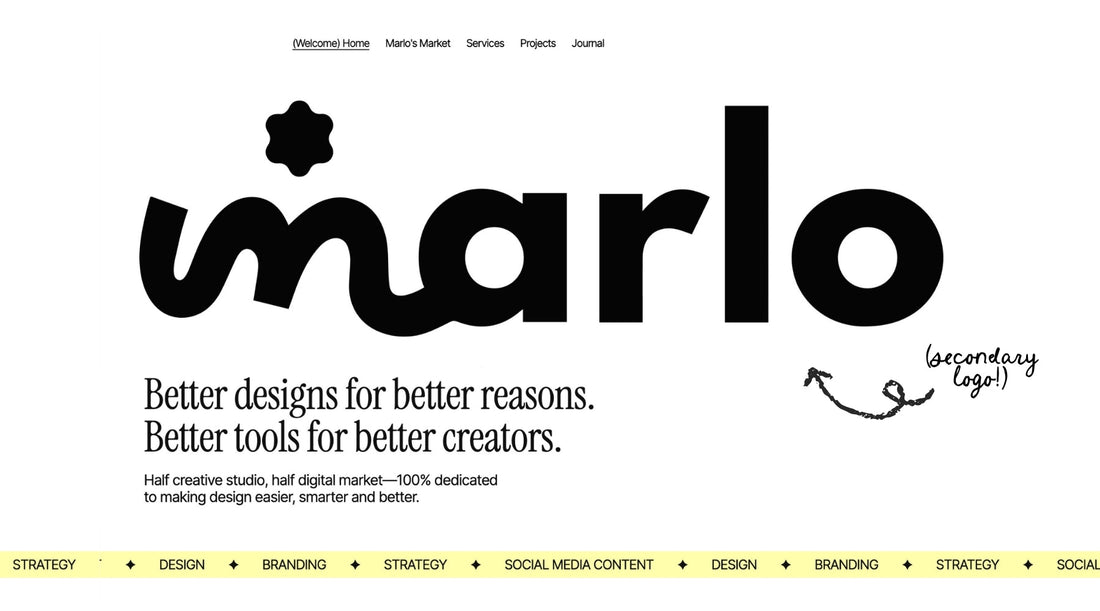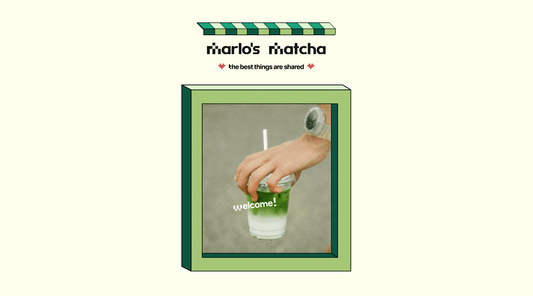
Secondary Logo—Essential Guide
A secondary logo is the unsung hero of design.
It doesn’t get the attention of the primary logo, but Marlo’s secondary logo is on our home page for a reason.
It’s more compact, fits in more places than your primary logo and keeps all the good stuff for brand recognition.
In this article, you'll learn what makes a secondary logo essential, how to create one, and how it fits into the bigger picture of your brand identity.
What is a Secondary Logo?
A secondary logo is a simplified version of your primary logo that maintains your brand identity while working in spaces where your full logo might not fit well.
Think of it as your brand's supporting player, ready to step in when needed.
Your secondary logo typically contains fewer elements than your primary logo. It might feature just your company name without the accompanying icon, or it could rearrange elements for a more compact format.
For businesses with longer names, a secondary logo might use an abbreviated version of the name.
For example, at Marlo Studios, our primary logo displays "Marlo Studios" while our secondary logo simply shows "Marlo."
A well-designed secondary logo works harmoniously with your primary logo and icon to create a cohesive brand system that functions beautifully across all applications.
Three Logo Variations You Need
To create a strong brand identity system, you need a primary logo, secondary logo, and icon that all work together.
Below we explore each logo variation in more depth. We also made a TikTok video on this topic if you prefer learning in video format.
Primary Logo
Your primary logo serves as your main brand identifier.
It contains all the essential elements of your visual identity, including your full business name and any accompanying symbols or graphics.
You'll use this version in prominent placements like your website homepage, business signage, and marketing materials where space isn't limited.
This is the most complete expression of your brand.
Secondary Logo
A secondary logo functions as your adaptable alternative.
It retains core elements of your primary logo but in a simplified or rearranged format. This version thrives in more constrained spaces like business cards, invoices, email signatures, and social media profiles.
The secondary logo maintains your brand recognition while fitting comfortably in smaller formats.
Primary Icon
Your icon represents the most simplified version of your brand mark.
Often containing just a symbol or initial, it works in tiny spaces where even your secondary logo would be illegible.
Common applications include favicons, app icons, social media profile pictures, and watermarks. Think of your icon as your brand at its most concentrated form.
Together, these three logo variations ensure your brand can appear professionally in any context, from a large billboard to a tiny app icon on a smartphone.
How To Create a Secondary Logo
Creating an effective secondary logo requires thoughtful consideration about which elements of your primary logo to keep and which to simplify.
Elements to Keep
When designing your secondary logo, focus on preserving the most recognizable aspects of your primary logo.
This might be your distinctive wordmark, a unique symbol, or a specific color combination that defines your brand identity.
For text-based logos, consider which words are most essential. The typography should remain consistent with your primary logo to maintain visual continuity.
An example of this is keeping the core “Marlo” from “Marlo Studios”.
Elements to Remove
Analyze your primary logo and identify elements that aren't absolutely necessary for brand recognition in smaller formats.
Supporting text like taglines, establishment dates, or descriptive phrases are often the first elements to go.
An example of this is removing the “Studios” from “Marlo Studios”.
The Logo Hierarchy
The relationship between your logo variations follows a clear pattern that we’ve successfully applied to over 100 brands at Marlo Studios.
Your primary logo includes everything, your secondary logo offers a streamlined version, and your icon provides the most simplified representation.
This hierarchy ensures your brand maintains consistency while adapting to various applications and size requirements.
Conclusion
A secondary logo is an essential part of a brand identity system, providing flexibility and consistency across different applications.
As we've explored, your logo hierarchy includes three key variations: a primary logo for main applications, a secondary logo for space-constrained contexts, and an icon for minimal usage.
By thoughtfully simplifying the primary logo while maintaining its most recognizable elements, you create a cohesive brand experience that works across all platforms and touchpoints.
To implement these principles in your own design work, check out our Brand Identity Guidelines 2.0 template.



